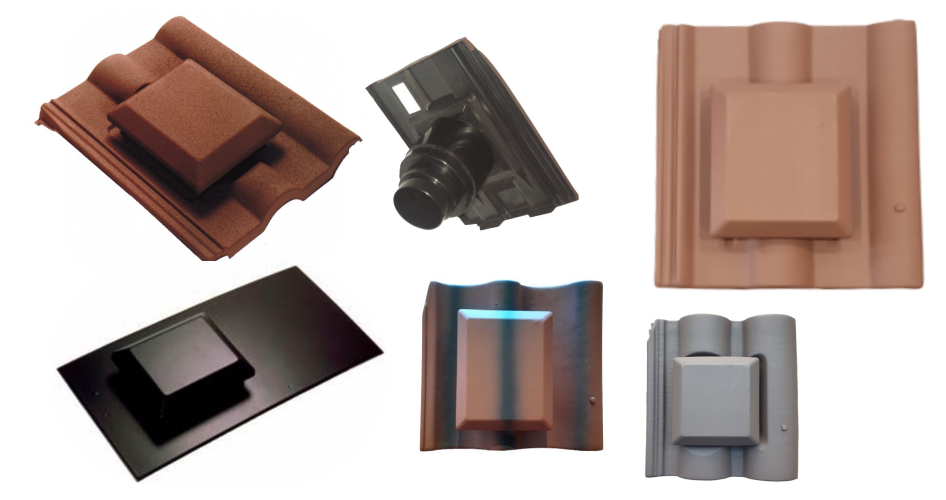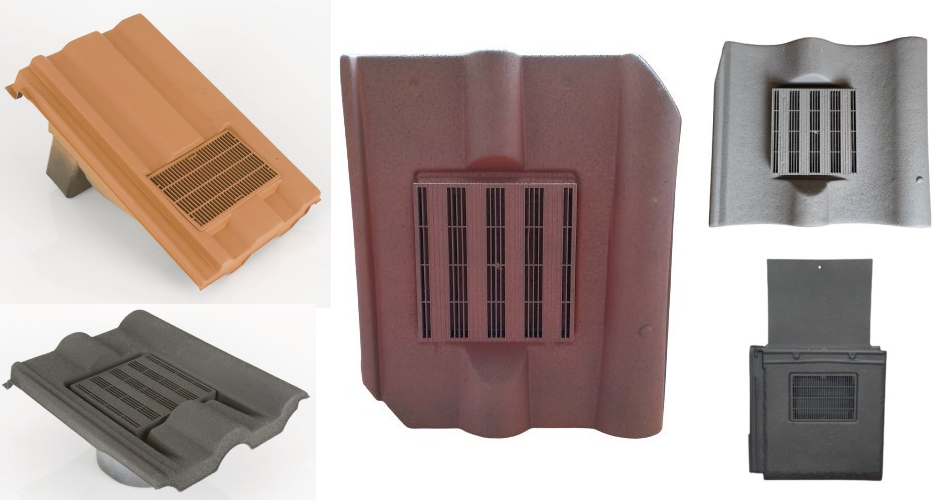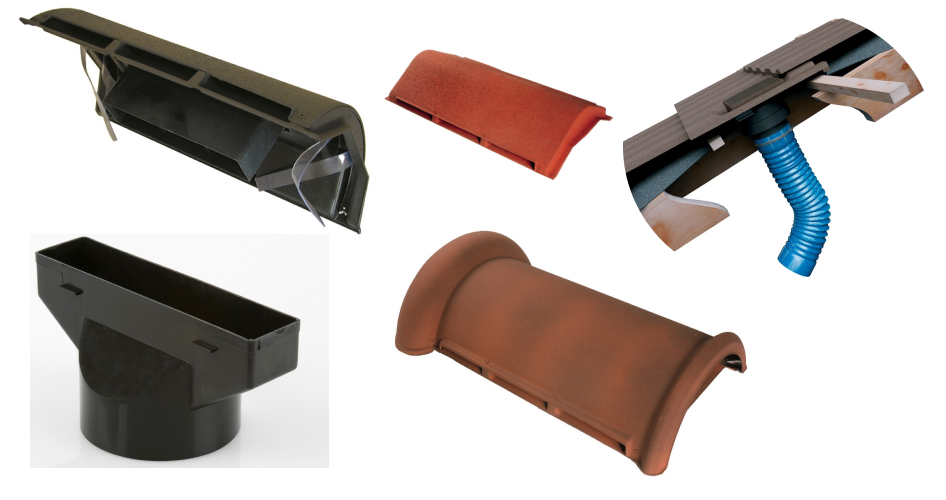Cowl Roof Tile Vents
Introducing the Harcon Corovent Low Profile Roof Tile Cowl Vent, a discreet yet highly effective ventilation solution designed for both low and high-level applications. Featuring a round integral felt sleeve, this tile cowl vent boasts innovative barriers that fend off water ingress and shield against wind-driven rain, ensuring optimal drainage down the slope. The inclusion of a felt sleeve minimises tearing around spigots, while the generously sized spigot guarantees exceptional roof ventilation performance.Available in two ventilation area options - 10,000mm Sq. for the Small Cowl and 20,000mm Sq. for the Large Cowl - this product offers versatility to suit various roofing needs. Additionally, the Large Cowl variant provides the flexibility to add a pipe adapter with a 100-110mm diameter for seamless connection to extractors. For further customisation, the Large Cowl Adaptor can be easily modified to form a 125mm connection.
Compared to conventional in-line vents, the roof tile cowl vent may be more visible along the roof line. However, its superior protection against wind-driven rain makes it a preferred choice for those prioritising functionality and durability.
Roofline Roof Tile Vents
Roofline roof tile vents, also known as roofline ventilation systems or tile vents, are specialised components installed along the edge or perimeter of a roof to facilitate air circulation and ventilation within the attic or roof space.Corovent Roofline roof tile vents are innovative solutions designed to enhance the ventilation system of your roofing structure discreetly and effectively. Crafted as discreet interlocking tile vents, they seamlessly integrate with the profile of your roof tiles, ensuring an almost invisible appearance when viewed from ground level.
These vents are engineered with meticulous attention to detail, featuring a unique discrete cassette mechanism that reliably keeps water above the roofline, safeguarding against potential water ingress and damage. Additionally, the inclusion of a round felt sleeve serves to mitigate the risk of felt tearing around spigots, contributing to the durability and longevity of the roofing system.
One of the standout features of Corovent Roofline Vents is their large spigot, which facilitates excellent roof ventilation, promoting optimal airflow within the attic or roof space. This efficient ventilation system helps regulate temperature and humidity levels, preventing issues such as mold, mildew, and structural damage caused by excessive moisture build-up.
For added versatility, Corovent Roofline Vents offer the option to include a pipe adapter, allowing seamless connection to extractors or other ventilation systems as needed. This customisation ensures compatibility with various roofing configurations and ventilation requirements, offering flexibility and convenience to homeowners and roofing professionals alike.
Compared to traditional inline roof tile vents, Corovent Roofline Vents offer a discreet yet highly functional alternative. While inline vents may be less visible along the roofline, Corovent Roofline Vents prioritise both aesthetics and performance, blending seamlessly with the overall profile of the roof while delivering superior ventilation capabilities.
With a ventilation area of 10,000mm Sq., Corovent Roofline Vents provide ample airflow to maintain a healthy and functional roofing system. Whether you're looking to improve ventilation in new construction or retrofitting an existing roof, Corovent Roofline Vents offer an effective and visually appealing solution to meet your needs. .
Ridge Roof Tile Vents
Ridgeline vents, also known as ridge vents, are a type of ventilation system installed along the ridge of a roof. They are designed to allow warm, moist air to escape from the attic or roof space, while also promoting airflow to help regulate temperature and moisture levels.These vents typically consist of a low-profile design that runs along the length of the roof ridge. They can be made from various materials, including metal, plastic, or composite materials, and are often designed to blend in with the roofline for a more aesthetically pleasing appearance.
Ridgeline vents work by creating a continuous opening along the ridge of the roof, allowing hot air to rise and escape naturally through convection. As hot air exits the attic space, cooler air is drawn in through eaves or soffit vents, creating a natural flow of air through the attic.
One of the key advantages of ridgeline vents is their ability to provide uniform ventilation along the entire length of the roof ridge. This helps to prevent hot spots and ensures consistent airflow throughout the attic space. Additionally, ridgeline vents are often more effective than traditional roof vents, such as static vents or turbine vents, because they provide a larger opening for air to escape and are less prone to becoming blocked by debris or snow. Overall, ridgeline vents are an important component of a well-designed roof ventilation system, helping to improve energy efficiency, prevent moisture buildup, and prolong the life of the roof and underlying structure.



